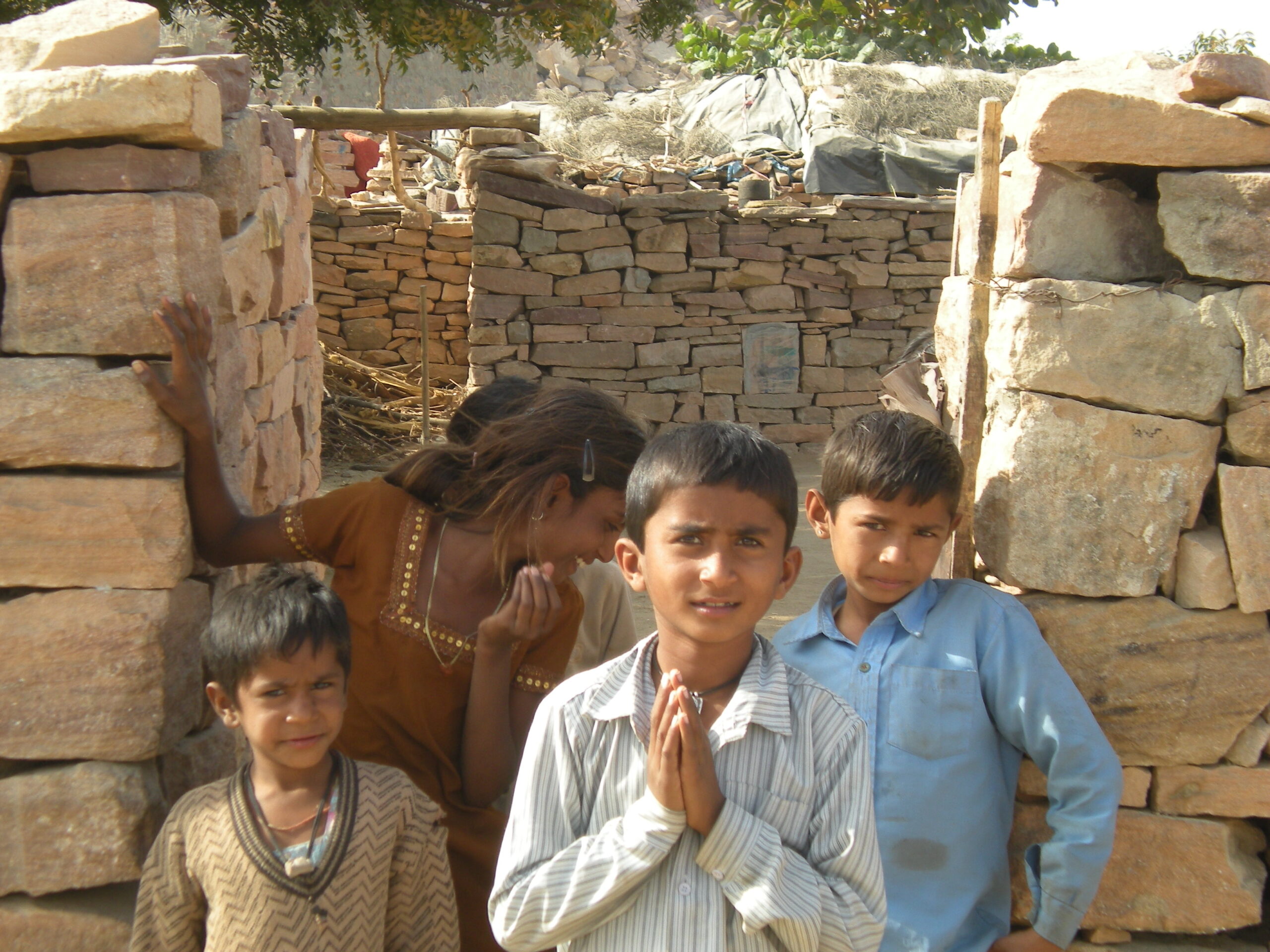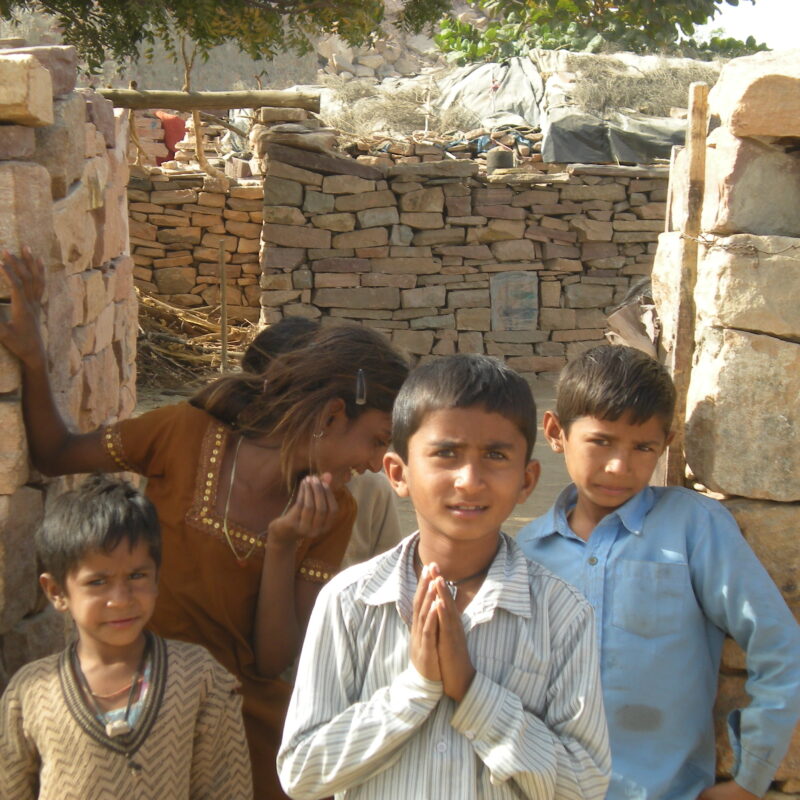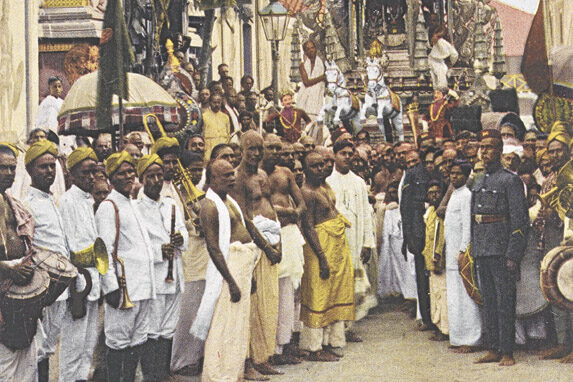
The plight of Pakistani Hindu refugees is a little-known human rights crisis in India. In this interview with refugee activist Hindu Singh Sodha, HAF Human Rights Director Deepali Kulkarni explores some of the challenges that Pakistani refugees face in India.
Mr. Hindu Singh Sodha is an activist for Pakistani minorities living in India. As a Pakistani refugee, he gained Indian citizenship while attending law school in Jodhpur, Rajasthan in 1977, and has been advocating for other Pakistani refugees ever since. He is the founder and director of Universal Just Action Society (UJAS) and has also founded Pak Visthapit Sangh and Seemant Lok Sangathan — two community-based organizations in Rajasthan. He advocates for all Pakistani minorities, working primarily with Hindu-Pakistanis living in settlements around the India-Pakistan border and throughout India.
When did your family come to India? What are the challenges they faced that led them to leave Pakistan?
My family migrated from Pakistan in 1971. When I say 1971 it was before the war. I remember the date; it was February 8, 1971.
During the Bangladesh Liberation War 90,000 people migrated from Pakistan. My grandfather was a member of the Sindh State assembly and then my uncle and cousin were also in politics. From the very beginning Pakistan wrote that the government would be known as the “Islamic Republic of Pakistan” so it is very clear how the non-Muslim people will be treated, in particular the Hindu minority. My family used to raise the voice of the minorities over there. A time came when there was only one member of the Youth Cabinet left and it was my cousin. His political rivals instigated his arrest because he was Hindu and charges were made that he was an agent of India. At that time, the only punishment under martial rule for being an agent of India was death. We knew he was innocent.
My family migrated before the war because they knew what the consequences would be of the war. I was in 10th standard. We migrated before the exams. It was a challenge for me to learn Hindi and appear in the 10th class. There were three months left so it was not possible for me to appear for the exams so that year went wasted in that way. Then in India, after skipping an academic year, I got admission in 10th.
In meantime the war influenced influx of migrants from Pakistan had to settle in refugee camps erected by government of India. Refugees on new place have had to face immense issues of day to day life. Because my family were leaders in Pakistan, everyone who migrated from Pakistan was coming to my family for help. I was writing applications and helping them as a volunteer for the refugees who came here. Because refugees leaders, some of them, were coming to my family so I was helping but I was only 16 years old at that time. They would come to ask what should they do? Who should we write to?
Per the Shimla agreement everyone needed to go back, but no one wanted to go back.
You mentioned there were a lot of challenges that refugees faced when coming to India in ‘71. Did your family face any of those challenges? Can you paint a picture for us of what challenges refugees were facing when coming to India in ‘71?
There were many challenges. We were a political family, a landholding family. And overnight we had to leave so they couldn’t carry much with them. It was a very big challenge in a way, and a very hard life they had to face in India. Unfortunately, one other factor was that they were not treated as refugees because war started in 1971. They were living worse than refugees. For those people they started refugee camps but my family was not staying in refugee camps.
This is the situation of current refugees in India as well. Most are not recognized as refugees, and so they struggle to get help from the Indian government. Can you tell me more about how you have seen the situation for refugees change over the years?
At that time what happened, the condition was they were part of the Shimla agreement, a very important agreement signed by two heads of state — Pakistan and India. There were other issues as well: territory which was conquered by Indian troops, 90,000 people who migrated from the area that was captured. Pakistan wanted them back and India wanted them to go back. But no one wanted to go back. In a way it was a pilot agreement. People were ready to fight for that. At that time my family also took to fighting so that these people did not have to go back. There should be a choice for these people. It was 25 years since the existence of Pakistan. Later on the government of India said that fine, they should be allowed to stay.
They also wanted to stay there because they had connections, their language was very similar. The World Food Organization, the Rajasthan government, and the government of India all coordinated to create these camps.
So people stayed in the refugee camps until 1977 and then the regime had changed. There was an emergency from ’75-’77 and the Janta Party came in power in 1977. The Janta party, decided that these people should be given citizenship and should be rehabilitated.
This was the condition over there at that time. After ’77 when the government changed and came in power who were supporting them. These people granted them Indian citizenship. From Janta Party government Bhairon Singh Shekhawat, Lal Krishan Advani, Raj Mata Scindia, and Atal Bihari Vajpayee were the main champions who supported this cause. The important thing is that these people that the government was in favor of granting them Indian citizenship. So they granted Indian citizenship to almost everybody.
There was a readmission package to grant them land for agriculture. Most of them were agricultural farmers. But not everyone got that because of the ration card issues. In one ration card there will be a father and two sons which will be the basis of the allotment. So three families got only one piece. Only one third got accessed this package and two thirds of each family members were left. This was the condition. That was probably the only time when the government came with the rehabilitation properly with a package.
Government has started giving rehabilitation packages to Kashmiri Pandits (Hindus who were ethnically cleansed from the Kashmir Valley in 1989-1991) so we are also arguing that the government should give Pakistani Hindus a rehabilitation package.
Even a few years subsequent to the war phase the western border was open but in 1990 the border was fenced Before that the border was porous. After fencing of border migrants from Pakistan willing to come India could only get two kinds of visas — visitor visa and pilgrimage visa. For the visitor visa there [were] so many problems. Either people are coming on the pilgrimage visa or visitor visa, but the reason was the persecution. If they go to the Indian embassy in Pakistan and ask for the visa that we are persecuted and want to leave the country, they could not. They have to wait for all these kinds of formalities. This change is different from the ’65 and ’71. However, the conditions over there were worsening day by day mainly due roaring waves of Islamic fundamentalism in Pakistan post Zia Ul Haq regime.
These people who were fundamentalists in Pakistan, they were getting resources and they were institutionalized and becoming more powerful. This was again a threat to the minority community. Whenever they wanted to give a message to India they would increase the persecution and as well, give the message to India that you know. In the Hindu majority area on the borders especially, hundreds of madrasas started within a decade from late ‘90s to early 2000s. This is also the period in which a lot of people were migrating. The people were feeling insecure in a way. It has continued. I would say migration due to persecution is strengthening day by day.
Note: This interview has been edited for brevity and clarity.







































